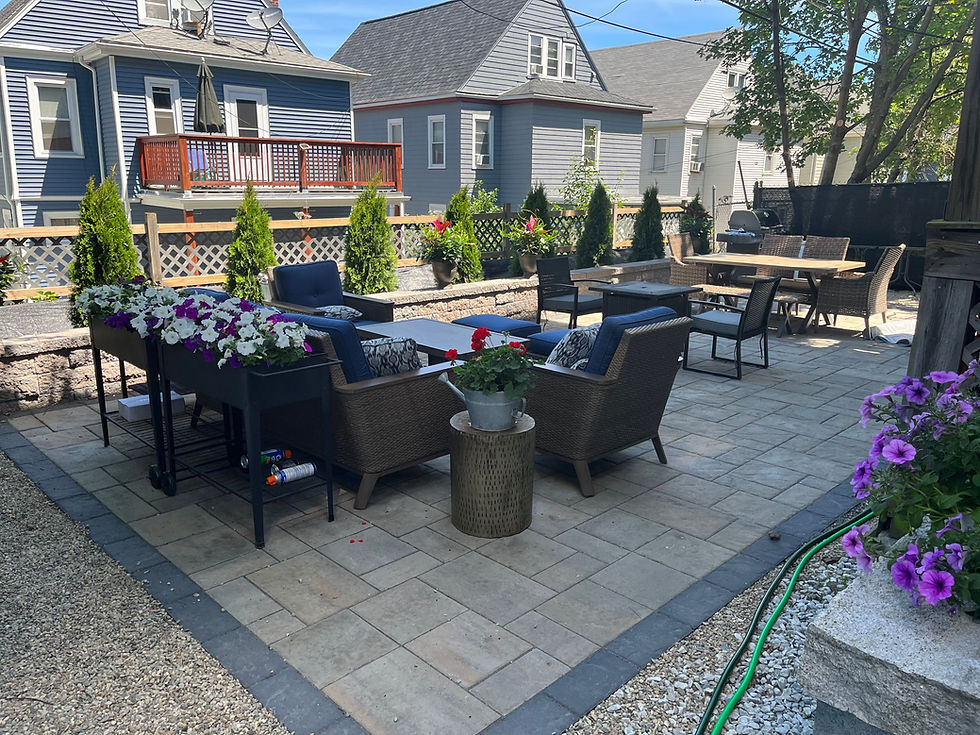7 Ways Experts Can Ensure Your Paver Driveway Will Be Long-Lasting in Weston and Lexington, MA
- Halstead Media Group
- Mar 9, 2022
- 3 min read
Updated: Sep 8, 2022

Quality pavers on their own are made to look attractive and durable, but they require the expert care and expertise of landscaping professionals to ensure that the surface they are used for—such as paver driveways—can withstand the freeze/thaw cycle and heavy use. When installed correctly, driveway pavers will not crack or require resurfacing like standard poured concrete driveways often do. Unlike poured concrete driveways, paver driveways are segmented, so even if there is an issue in a section of the driveway, it can be fixed more easily than breaking apart the entire driveway. Here are seven ways your paver driveway can be built to be long-lasting in Weston and Lexington, MA.
Related: Here Are 5 Ways a Paver Driveway Can Improve Your Front Yard Design in Lynnfield and Weston, MA
Proper Grading
The first step of a long-lasting paver driveway is preparing the ground for both proper drainage and to ensure the pavers are level. Your landscape contractors may outline the area for the driveway, mark the finished level goal for when the base layers and pavers are in place, and dig down to the appropriate depth. While this step is called “leveling,” landscape contractors tend to ensure the ground has a slight slope so that the water drains away from the house and doesn’t pool up in one spot.
Stabilization Fabric
Some driveway projects will require a stabilization fabric made of geotextile materials that take advantage of their filtration abilities to allow water to seep through the material. Driveway fabric helps prevent shifting and prolongs the life of the driveway by ensuring the pavers stay in place for many years.
Compacted Base Layer
Next, the driveway professionals typically measure the height needed for a layer of gravel and place string lines to ensure the right amount of stone is filled. The gravel is laid on the ground and leveled to the string lines. Often, equipment is used to compact the pavers to eliminate air pockets and shifting of pavers.
Add Sand (or Stone Dust)
Measurements are taken again to determine how much sand or stone dust to add over the compacted base layer of gravel. The sand is spread out over the entire driveway and leveled to the appropriate height.
Paver Restraints
Before the pavers can be added, paver restraints are secured to the edges of the driveway. Less experienced companies or DIY installers may skip this step, but it’s essential to prolonging a paver driveway. The edging ensures that the pavers don’t shift or sink over time. Paver restraints are needed along the perimeter of the driveway unless the edges are against another solid surface, like a wall or curb. Paver restraints will keep your pavers in great condition for longer and helps avoid shifting, lifting, and cracks.
Expert Paver Installation
Now that all of the preparation is complete, the driveway experts can install your pavers according to the pattern you’ve selected. Your landscape contractor can show you examples of paver designs and help you select an option that integrates well with your home and landscaping.
Paver Sealing
As a final step to preserve color, your driveway pavers may be sealed. While some pavers do not require sealing, some people choose this option, as sealant can prevent fading of pavers from the UV rays of the sun, and enhances the colors and contrasts found in the concrete pavers. Sealing needs to be redone every three to five years.




Comments